Hello everybody and welcome to Episode 5 of What’s in that Hole?, a new series I’m writing for my blog.
Last time we had our first man-made hole in a special edition episode. Today we get back to our roots and look inside a hole made by a common Sonoran Desert critter.
The holes
Today, we have multiple holes in the same area. I found these holes at the base of a tree across the street from the Old Engineering building at the University of Arizona. But these holes can be found all over Tucson and the surrounding desert – I’ve had them at my house in the Catalina Foothills and often see them near the Romero Pools trailhead in Catalina State Park (my favorite hike!).
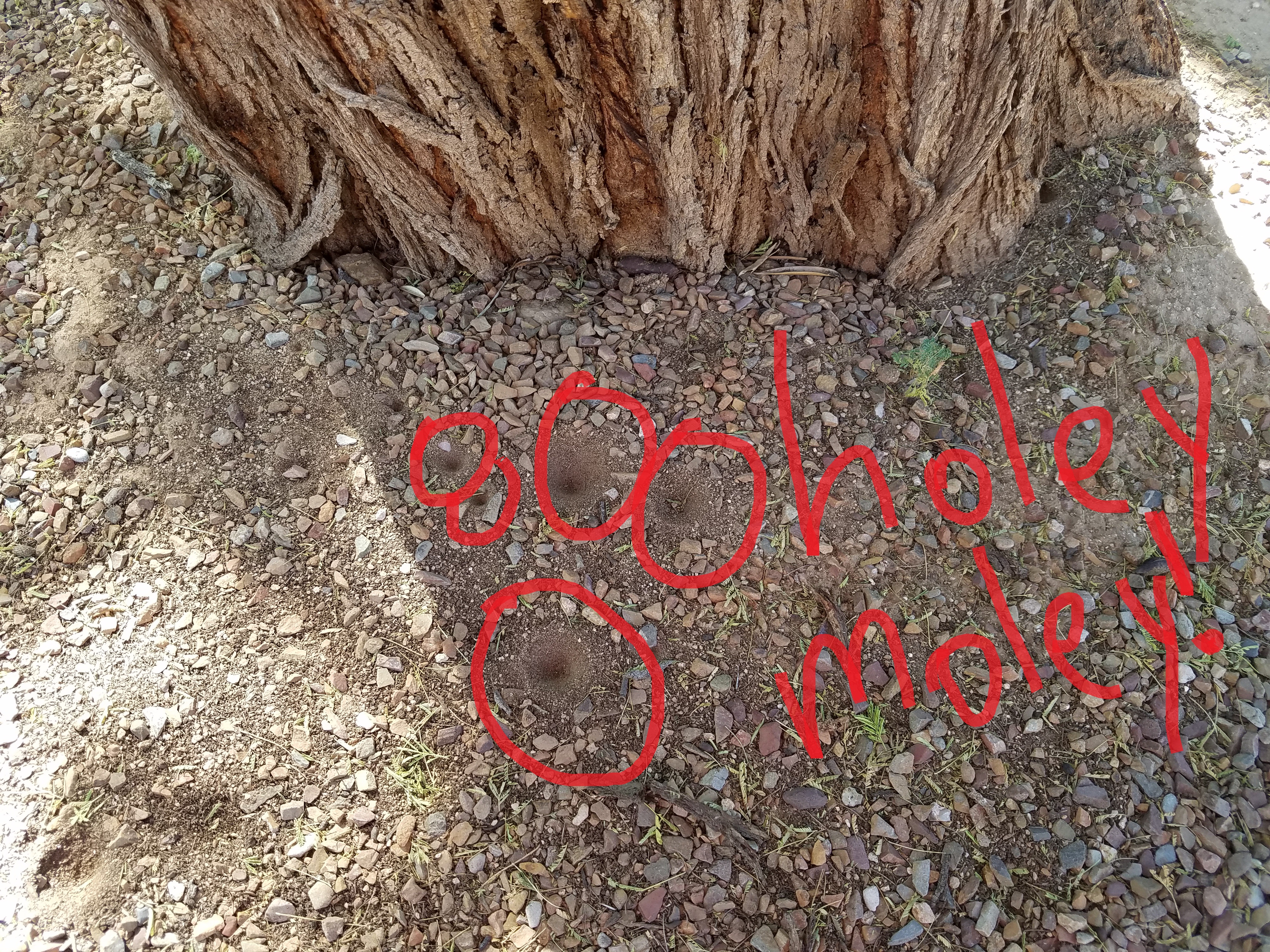
The holes.
The holes are actually pits in the sand/soil; little upside-down cones. I picked one to focus on:
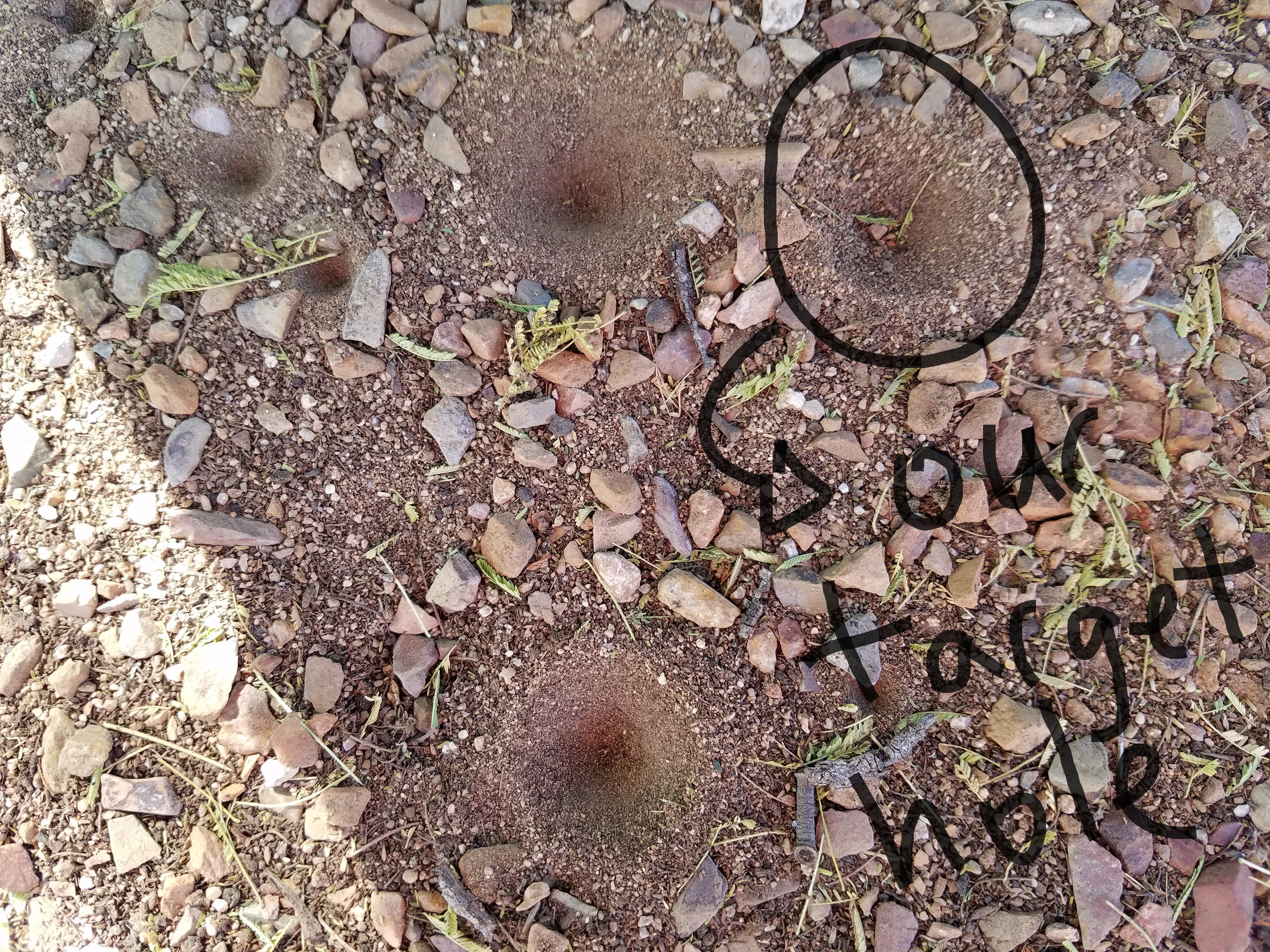
A closer look.
The occupants
Friends, there’s nothing in these holes. I know, I know – last time I promised to give you a hole with something inside this time. But I think it’s okay. Although there’s nothing inside these holes, there IS something just underneath each one. Is that good enough for you? It better be.
I tried to entice our miniature beast out with a twig, but to no avail, so I settled on the tried and true brute-force method. Below you can see what the target pit looked like after I had finished with it. Can you see our occupant in the rubble? It’s very well disguised!
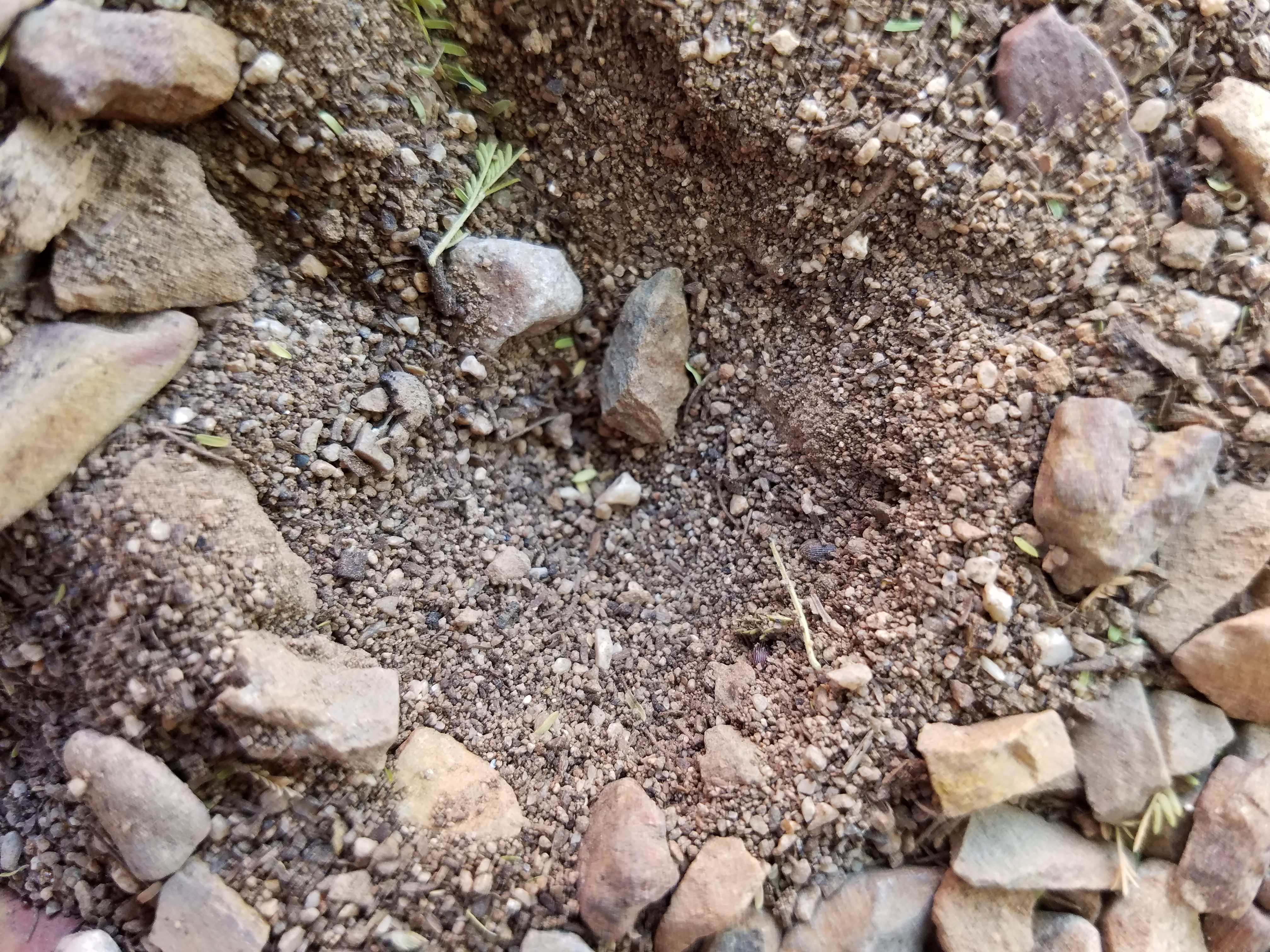
Can you see it?
In case you couldn’t find it, I’ve circled it here for you:
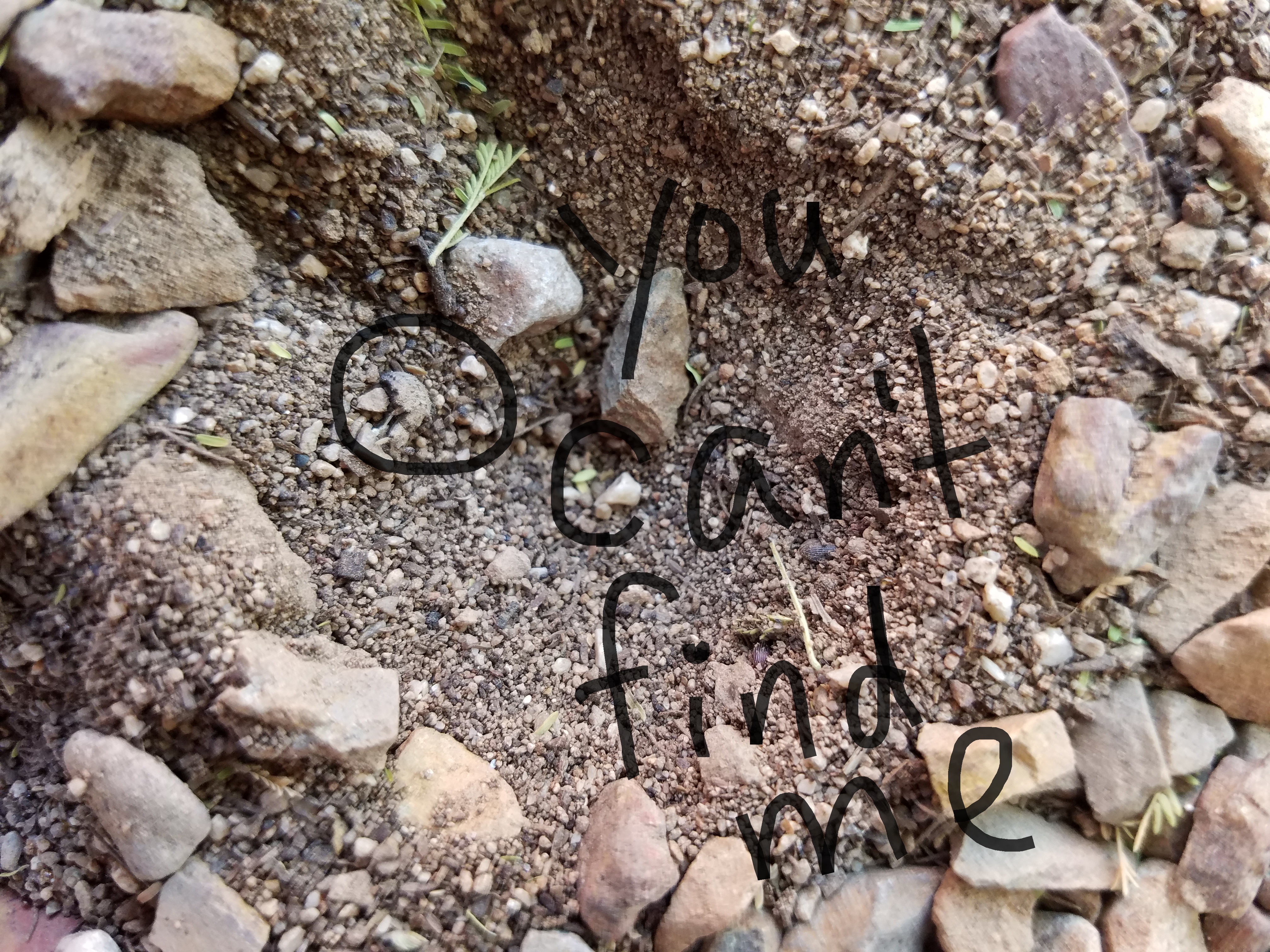
There it is.
Do you know what it is? You might, especially if you’re a Tucsonan. It’s an antlion larva! Here it is in my hand, to give you an idea of scale:

Pretty small for such a big hole.
Why antlion larvae are so cool
Antlion larvae are infamously ferocious. Each creates its own little pit and waits underground, just underneath the tip of the cone, until an unsuspecting ant falls in. Then it pounces! Kind of like a lion 😉
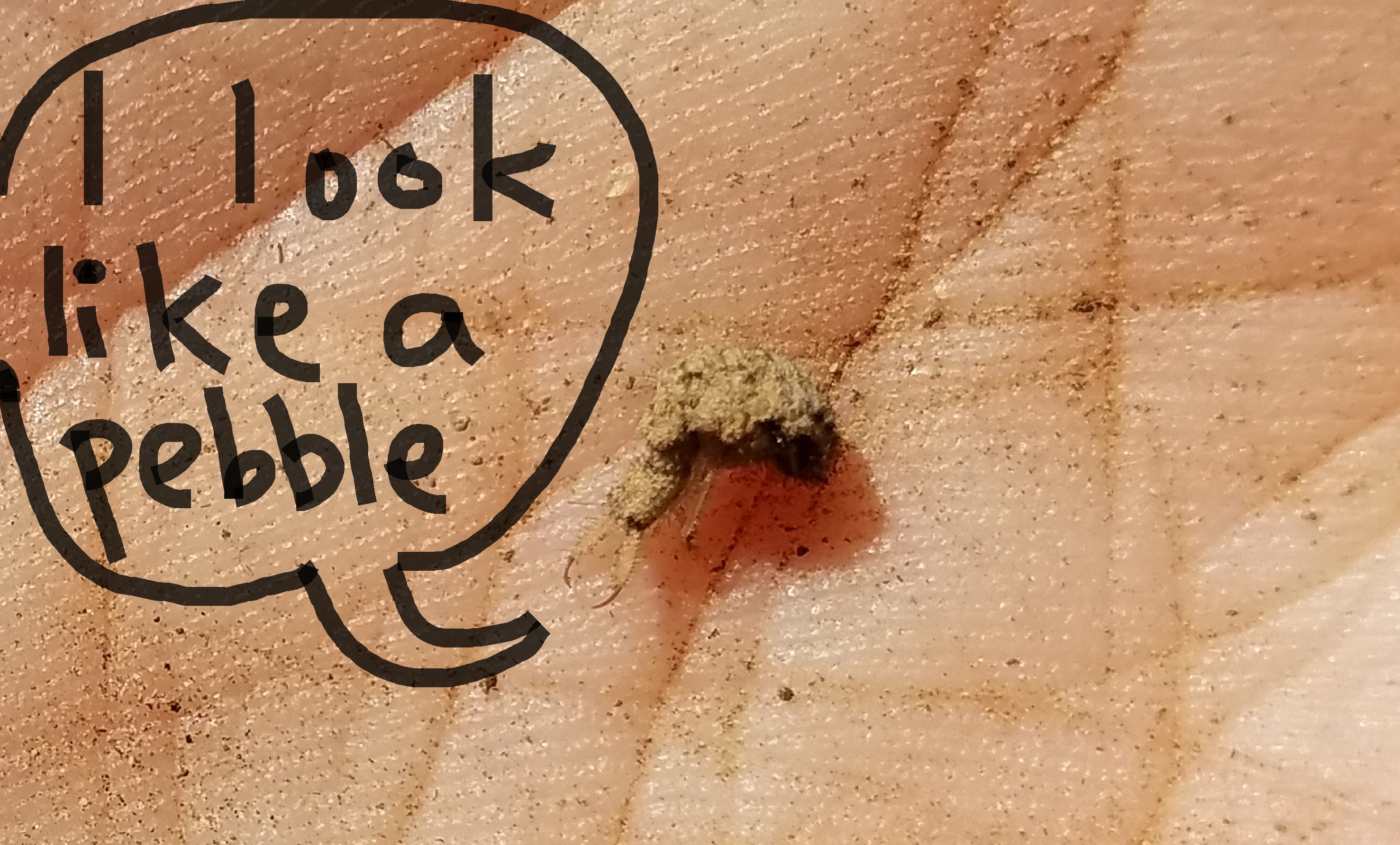
Showing off its disguise.
The larvae use their massive jaws to ensure the ant can’t escape the pit of doom.

Showing off its ant-vanquishing jaws.
I’m no entomologist, but I’m pretty sure there aren’t a ton of insects whose common names are based on the larvae’s features rather than the those of the adults (think about it – butterfly, ladybug, grasshopper, praying mantis – all names based on the adults’ appearance and behavior). But these antlion larvae are so damn impressive and the adults are so comparatively mundane that I can see why this insect group’s larvae get the special recognition.
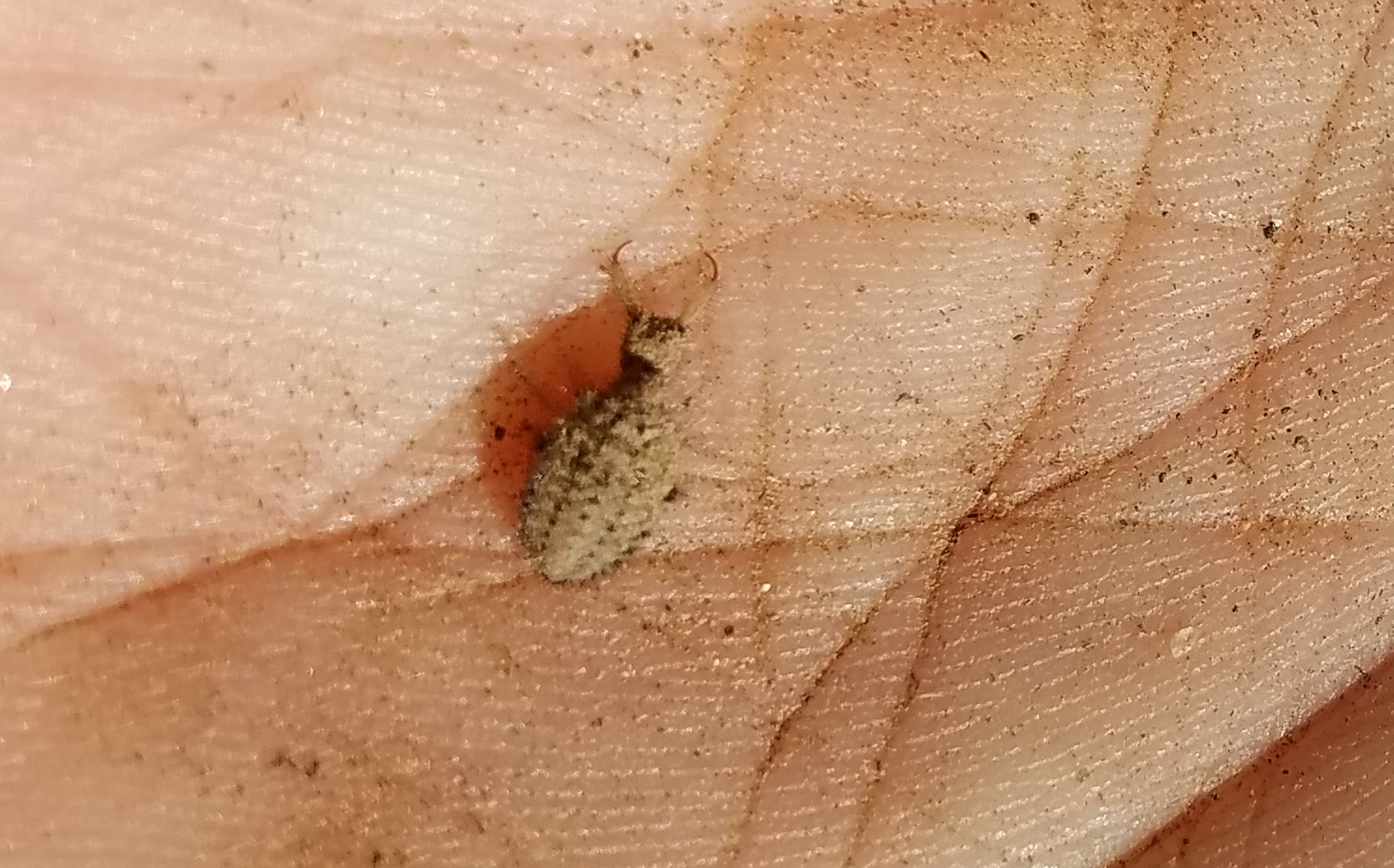
One more view.
If you want to see an antlion larva in action, check out the National Geographic video below:
So there you have it! This episode’s holes featured antlion larvae, tiny but impressive predators. See you in the next episode!
Go to previous episode
Read the next episode here!
Share this Post
